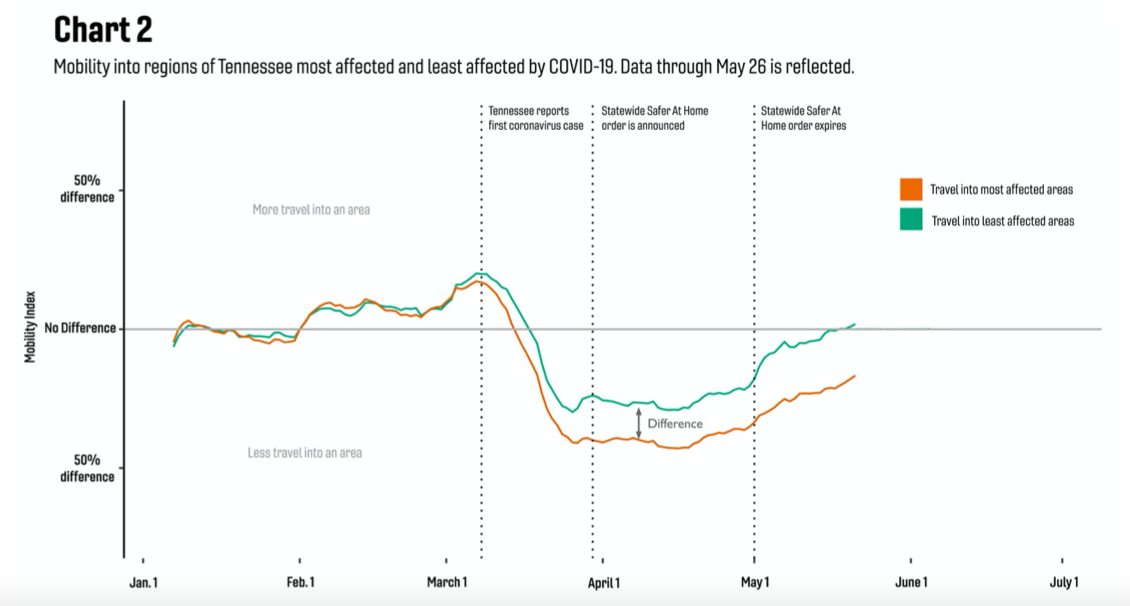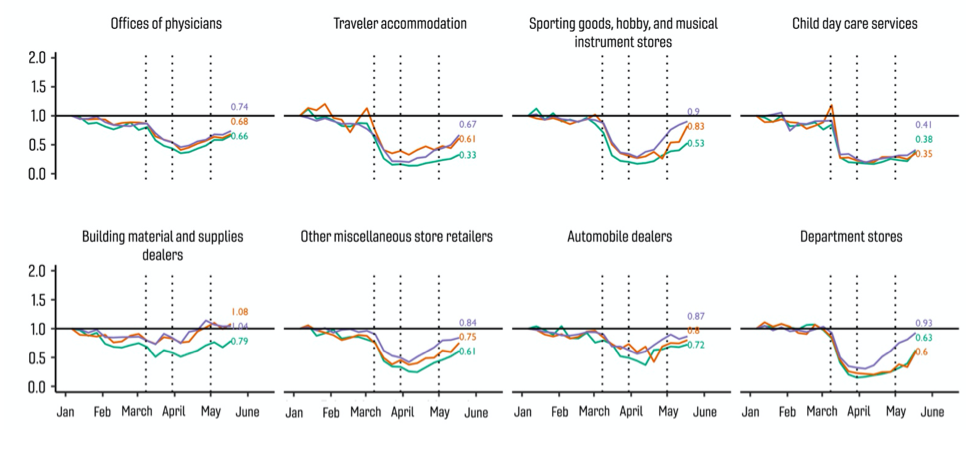 Vanderbilt University
Vanderbilt University
Tennesseans, especially those outside metro areas, are returning to travel levels seen before the first case of COVID-19 arrived in the state, according to the latest analysis from researchers at Vanderbilt University.
Those researchers have been issuing public health policy papers since early April. Those papers have focused largely on the spread of the virus, predictions on the possible surge of patients in hospitals, and when the state may reopen the economy.
However, the newest paper focuses on travel. For it, the researchers relied on “anonymized cellular device data” to analyze travel habits in the state.
“Tennesseans dramatically scaled back their movements just after the first coronavirus case was reported in Tennessee and as reports of transmission more broadly in the U.S. began to emerge in early March,” reads the paper. “Moreover, the chart makes clear that mobility decreased statewide seven-10 days before the statewide Safer at Home policy was announced on March 31st.
“Finally, mobility began increasing in mid-April, and in some regions has now returned to levels last seen in February 2020. Non-metro areas of the state have seen larger increases in movement after the Safer at Home order expired on May 1st.”
Travel in the regions around Shelby County and Davidson County are the lowest in the state, according to the data. Travel in the rest of West Tennessee, south central Tennessee, and Upper Cumberland regions is now back above February levels.
 Vanderbilt University
Vanderbilt University
Researchers wondered if travel changes were different in areas most affected by the virus. They found travel patterns were the same before the first case arrived here in early March. But “sustained mobility differences between these areas emerged just after the first case, and differences became larger over time.”
 Vanderbilt University
Vanderbilt University
“Our results underscore an important point about the virus and its impact on the Tennessee economy,” reads the paper. “Mobility changes in areas with the most COVID-19 cases occurred at the same time as changes in areas least affected by the virus to date.
“However, through May 26 the most affected areas continue to see substantially lower economic activity. A top priority for the state and for Tennesseans must be suppressing the virus to avoid further and prolonged negative economic effects across the state.”
Hardest hit by lower travel numbers have been religious organizations, museums and historical sites, day care centers, doctors’ offices, and department stores. The study looked at 16 of the top commercial categories identified by the North American Industry Classification (NAIC) and compared travel to those types of businesses to 2019 levels.
 Vanderbilt University
Vanderbilt University
“… visits to many places across Tennessee began a steep decline just after the first COVID-19 case was announced in early March,” reads the paper. “These declines leveled out in mid-April, but visits to some types of places have recovered to the levels observed for the same week in 2019.
 Vanderbilt University
Vanderbilt University
“Even outside of Davidson and Shelby counties, visits to restaurants remain 20 percent below comparable amounts from the same week in 2019, while across all areas visits to churches remain 40 percent – 50 percent below their usual levels for mid-May, presumably due to limits on large gatherings.”
The Vanderbilt researchers explained the information they used came from anonymized and privacy-protected cellular device data from SafeGraph, a data analytics firm. The firm tracks 40 million smartphones, and location movements “are recorded in terms of travel among census block groups, which are geographic areas containing between 600 and 3,000 people.” The data is only collected from these census block groups, “and thus we do not track individuals’ movements across the state.”
Read the entire paper here:
[pdf-1]